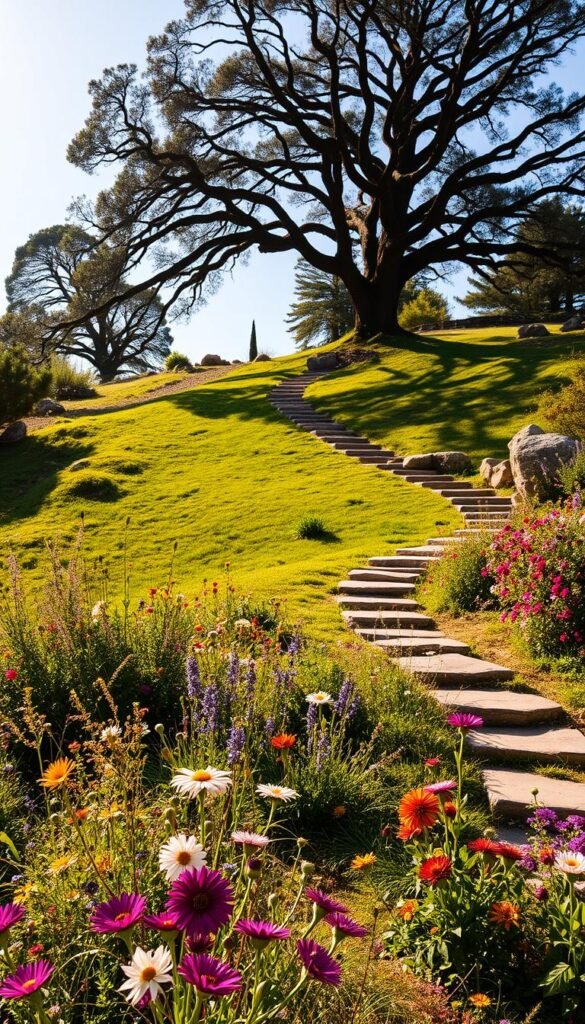Working with sloped or uneven ground might seem daunting at first, but these natural features can become your greatest ally. Elevation changes create unique opportunities to design dynamic outdoor spaces that flat yards simply can’t match. Imagine colorful blooms cascading down a hillside or stone pathways winding through multi-level planting areas.
The secret lies in embracing what you already have. Instead of fighting against rocky outcrops or steep slopes, clever landscaping techniques let you highlight these elements. Terraced beds carved into hillsides not only prevent soil erosion but also create eye-catching layers for your plants. Strategic rock placements can anchor delicate root systems while adding texture to your design.
You’ll find that proper planning turns potential headaches into showstopping features. From selecting drought-resistant varieties to incorporating natural drainage solutions, every choice builds toward a thriving ecosystem. The result? A living masterpiece that evolves beautifully with each season, proving challenging terrain can become your landscape’s crowning glory.
Understanding Your Hilly or Rocky Terrain
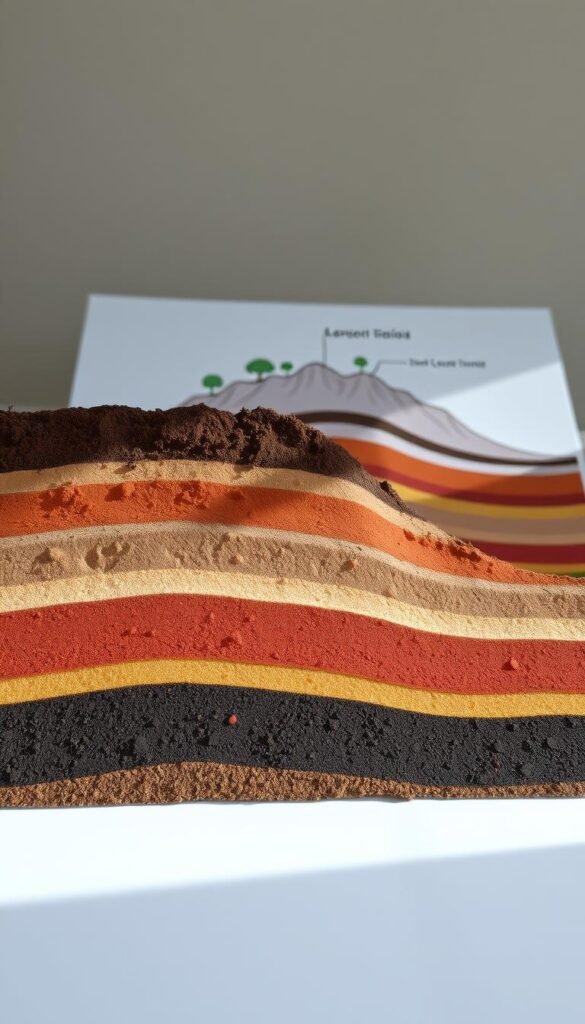
Your property’s natural slopes and rock formations aren’t obstacles—they’re design opportunities waiting to be unlocked. Start by examining three key elements: slope steepness, soil behavior, and water movement patterns. These factors determine which landscaping solutions will work best while keeping your yard stable.
Slope Evaluation Made Simple
Grab a measuring tape and level to categorize your incline. Gentle slopes (under 30%) allow for simple planting beds, while steeper grades might need terraced structures. Watch where rainwater pools during storms—these areas often need drainage upgrades to prevent erosion.
Soil Secrets Revealed
Perform a quick soil test using this method:
- Scoop handfuls from different areas
- Note texture and moisture retention
- Check for rock content
Sandy soils dry fast but shift easily, while clay holds water like a sponge. Most yards benefit from mixing in organic matter to improve stability. Don’t fight existing rock formations—use them as natural anchors for plantings or stepping stones.
Notice how sunlight hits different zones? South-facing slopes bake in summer heat, creating perfect spots for drought-tolerant species. North-facing areas stay cooler, ideal for shade-loving groundcovers.
Incorporating Retaining Walls and Terracing
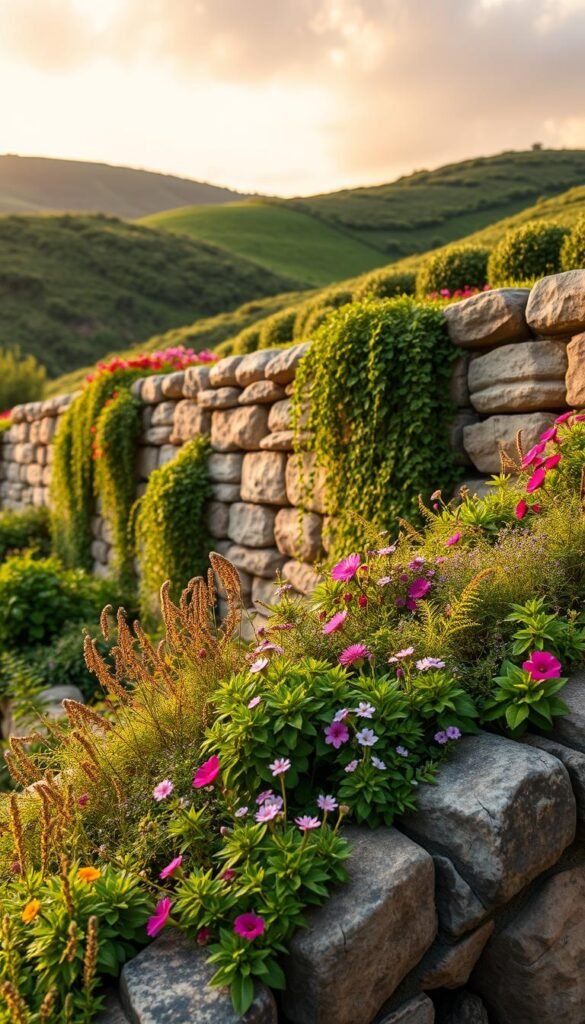
Transform tricky slopes into stunning showcases with strategic structural solutions. Retaining walls do more than hold soil—they create functional art that organizes your space into usable zones. When paired with terracing, these features turn erosion risks into thriving planting areas.
Building Stable Retaining Walls
Choose materials that match your landscape’s personality and needs. Concrete blocks offer durability, while natural stone blends seamlessly with rocky settings. Always include drainage gravel behind walls to prevent water buildup. For slopes over 3 feet, consult local building codes—safety matters as much as aesthetics.
Designing Multi-Level Terraced Gardens
Create a cascade of planting spaces using staggered walls. Three-foot-high terraces work best for easy access and maintenance. Between each level, consider adding paved surfaces for seating areas or urban container gardens. Dry-stacked walls with intentional gaps let you tuck drought-tolerant plants like sedum into vertical gardens.
Remember: multiple short walls often outperform single tall structures. They reduce pressure on each level while creating visual interest. Use native stones or recycled materials to keep costs low and eco-credentials high. Your terraced masterpiece will control runoff while showcasing plants at perfect viewing heights.
Creative Use of Rock Gardens
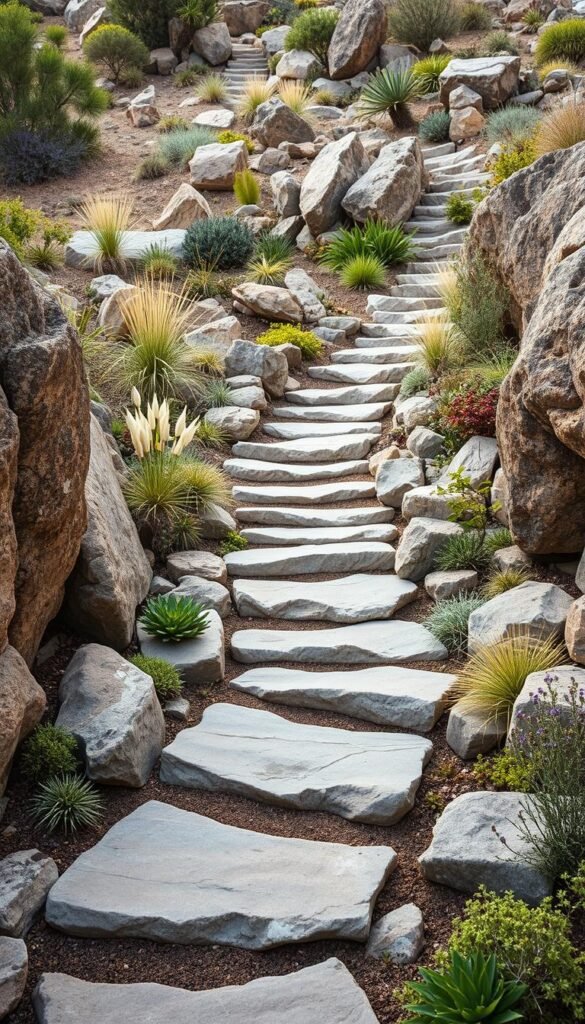
Nature’s rugged beauty can shine when you work with your land’s existing features. Rock gardens turn challenging slopes into textured masterpieces that control erosion while adding depth. The trick lies in arranging natural elements so they look untouched by human hands.
Integrating Natural Rock Steps and Boulders
Start by selecting angular stones that grip the soil. Bury each boulder one-third deep to create stable anchors. Arrange them in staggered clusters, mimicking how rocks naturally settle on slopes. This technique prevents sliding while giving plants sheltered pockets to thrive.
| Rock Type | Best Use | Slope Grade |
|---|---|---|
| Sandstone | Path borders | 0-15% |
| Granite | Step stones | 15-30% |
| Limestone | Retaining walls | 30%+ |
Crafting Pebble Paths and Stacked Stone Features
Use mixed-size pebbles to build walkways that guide visitors through your space. Larger stones make natural benches when stacked horizontally. For vertical interest, dry-stack flat rocks into low walls that double as planters.
Remember these tips:
- Choose local stone varieties to blend with surroundings
- Leave gaps between pavers for creeping plants
- Use darker stones in shaded areas to prevent glare
Your rock garden becomes a living sculpture when you let the land’s natural contours dictate placement. These features require minimal upkeep once established, making them perfect for busy homeowners.
Flower Garden Landscape Ideas for Hilly or Rocky Terrain
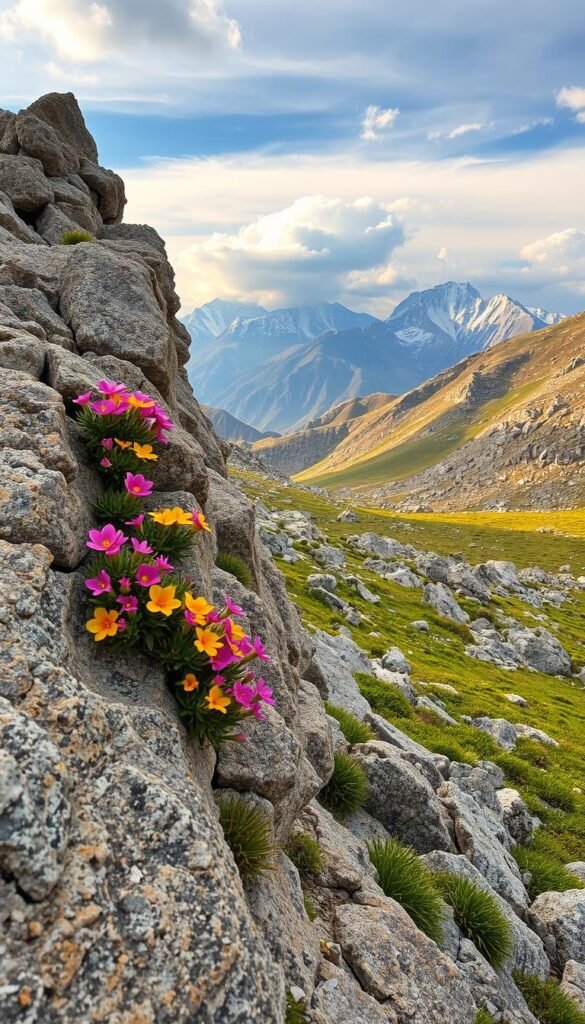
Transform challenging slopes into living tapestries by pairing strategic plant choices with nature’s palette. The right selections turn erosion-prone areas into stable showcases bursting with year-round interest.
Selecting Erosion-Resistant Flowers and Perennials
Deep-rooted varieties like creeping phlox and thyme anchor soil while creating cascading carpets of flowers. For dry hillsides, Pennisetum grasses mingle beautifully with drought-loving salvia. Ice plants shine in rocky crevices, their succulent leaves storing moisture between rains.
Top performers include:
- Snow-in-summer: Silver foliage with white blooms
- Lamb’s ear: Fuzzy leaves soften stone edges
- Rock cress: Purple flowers spill over ledges
These slope-stabilizing perennials thrive where others struggle, requiring minimal care once established.
Harmonizing Colors with the Natural Surroundings
Let your land’s stone tones guide your palette. Warm terracotta rocks pair well with golden yarrow, while cool granite outcroppings pop against blue lobelia. Stagger bloom times using this simple guide:
| Season | Color Scheme | Plants |
|---|---|---|
| Spring | Pastels | Candytuft, sweet alyssum |
| Summer | Vibrants | Ice plant, trailing lobelia |
| Fall | Warm tones | Little bluestem, sedum |
Layer heights for depth—low growers at the slope’s base, medium perennials mid-slope, and vertical accents like Russian sage at the top. Your plants become brushstrokes in a landscape painting that evolves with the seasons.
Plant Selection and Groundcover for Stability
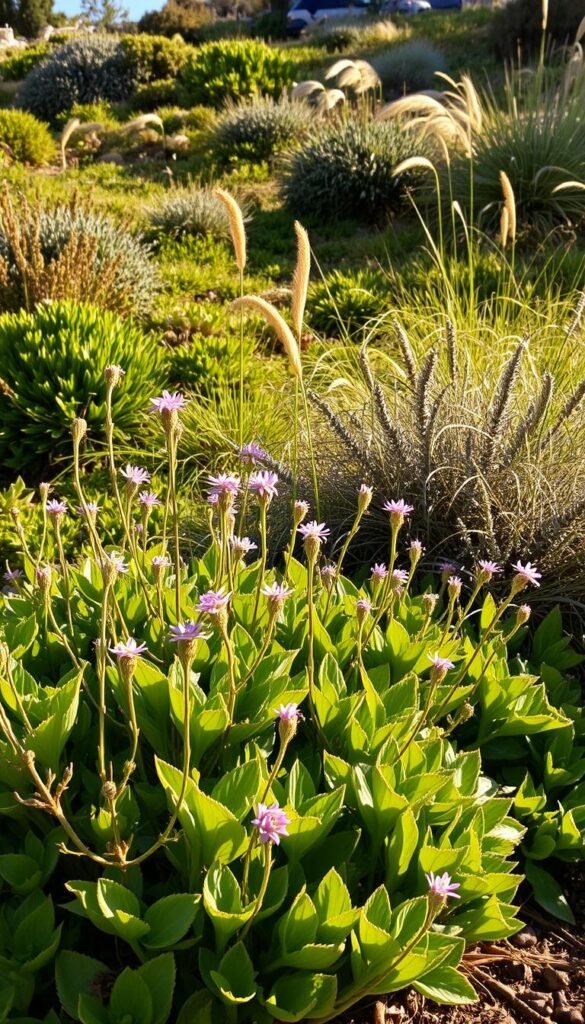
Turn unstable slopes into vibrant ecosystems using nature’s own anchors. The right mix of plants acts like living netting, gripping soil while adding beauty. Focus on varieties that spread quickly and dig deep—their roots form underground networks that outpace erosion.
Slope-Smart Shrubs and Perennials
Shrubs like elderberry and creeping juniper excel on inclines. Their woody stems and fibrous roots create natural terraces over time. Space them 3-4 feet apart for overlapping coverage as they mature. Pair with spreading perennials like stonecrop for instant ground protection while shrubs establish.
Sun-loving options thrive where others wither:
| Full Sun Plants | Shade Solutions | Root Depth |
|---|---|---|
| Yarrow | Hosta | 18-24″ |
| Salvia | Astilbe | 12-18″ |
| Forsythia | Rhododendron | 24-36″ |
In shaded areas, coral bells add texture with colorful foliage. Their shallow roots team up with deeper shrubs like snowberry for layered stability. Always amend planting holes with compost—slopes drain faster, so extra nutrients help plants establish quicker.
Pro tip: Stagger taller specimens uphill. This reduces soil exposure and creates a cascading effect. Your planting strategy becomes both practical and picturesque, turning challenging grades into thriving habitats.
Designing Accessible Garden Pathways
Navigating slopes becomes effortless when pathways merge function with beauty. Thoughtful route planning transforms steep grades into welcoming journeys through your yard. These paths invite exploration while providing practical access for upkeep.
Curved Stairways and Switchback Paths
Gentle curves soften steep ascents, making climbs feel manageable. Build steps 6-7 inches high with 12-inch treads for comfortable footing. Switchbacks work wonders on inclines over 30%, creating rest spots where you can pause and enjoy the view.
Material choices depend on slope severity:
| Material | Best For | Slope Grade |
|---|---|---|
| Flagstone | Dramatic steps | 35%+ |
| Pavers | Moderate slopes | 15-30% |
| Gravel | Gentle inclines | 0-15% |
Safe Access for Maintenance
Widen pathways to 4 feet where possible—this allows easy movement with tools. Install solar lights along edges for nighttime visibility. For extra stability on wet surfaces, choose textured materials like scored concrete or rough-cut stone.
Three essentials for durable paths:
- Compact base layers to prevent shifting
- Drainage channels beside steps
- Handrails on slopes exceeding 45%
By elevating your space with smart design, you create a yard that’s both stunning and functional. Every pathway becomes an invitation to connect with your outdoor areas while keeping maintenance straightforward.
Utilizing Water Features on Slopes
Elevation changes give your backyard a secret weapon for crafting breathtaking water displays. Natural slopes transform ordinary features into gravity-powered spectacles that combine beauty with practical benefits. Let’s explore how flowing water can solve drainage issues while becoming your landscape’s focal point.
Harnessing Gravity for Waterfall Magic
Steep grades over 45% create perfect conditions for vertical waterfalls. Use local sandstone or slate to build natural-looking drops. For gentler slopes (15-30%), design stepped cascades that slow water flow. A 1,500-gallon-per-hour pump suits most residential features under 10 feet tall.
| Slope Grade | Feature Type | Recommended Rocks |
|---|---|---|
| 45%+ | Sheer Drop | Granite, Basalt |
| 30-45% | Tiered Falls | Limestone, Sandstone |
| 15-30% | Meandering Stream | River Rock, Pebbles |
Dry Creek Beds That Work Hard
No water source? No problem. Dry streambeds guide rainfall while adding visual interest. Line your channel with:
- Angular stones to slow runoff
- Permeable landscape fabric
- Drought-tolerant plants in gaps
Position these features where water naturally collects during storms. The best designs look like they’ve always existed, with curved paths that mimic real waterways. Add solar-powered spotlights to highlight textured stone surfaces after dark.
Remember: Every water feature needs proper grading. Slope the base 2% away from structures to prevent pooling. Your creation will control erosion while becoming the backyard’s soothing centerpiece.
Enhancing Garden Aesthetics with Potted Displays
Elevate your outdoor areas with movable masterpieces that thrive on slopes. Strategic container placement turns challenging grades into dynamic showcases. Use elevation changes as natural stages for your favorite plants—position pots along terraced edges or atop rocky outcrops for instant visual impact.
- Wide bases prevent tipping on uneven ground
- Drainage holes combat waterlogging during rains
- Concrete or stone materials add stabilizing weight
Flank entryways and patio transitions with bold groupings. A trio of varying-height planters creates welcoming focal points. Rotate seasonal blooms like pansies in spring or mums in fall to refresh your space effortlessly.
Smart potting lets you grow plants that struggle in native soil. Acid-loving azaleas thrive in containers on alkaline slopes. Mobile displays adapt to shifting sunlight—move shade-seeking hostas under trees as summer heat intensifies.
Pro tip: Anchor lightweight pots by filling their bottom third with gravel. This lowers the center of gravity while improving drainage. Your portable garden becomes both practical and eye-catching, transforming tricky terrain into living art.
Mixing Hardscape and Softscape Elements
Blending structural elements with living textures creates harmony in challenging spaces. The magic happens when rugged stone materials meet flowing plantings, forming a balanced partnership that stabilizes slopes while captivating the senses.
Stone Meets Soil: A Dynamic Duo
Anchor steep areas with angular boulders that mirror your site’s natural geology. Tuck creeping thyme between rocks—its fragrant blooms soften edges while roots grip the soil. For modern homes, sleek concrete slabs pair beautifully with ornamental grasses that sway in the breeze.
Nature-Inspired Material Choices
Select local stones that match your region’s character. Rough-hewn railroad ties complement rustic settings, while smooth river rocks suit contemporary design. Always scale materials to your space: massive outcrops overwhelm small yards, while pebble mosaics get lost on vast slopes.
Pro tip: Let your home’s architecture guide plant choices. Wildflower plantings enhance cottage-style walls, while sculptural succulents elevate minimalist stone features. This thoughtful fusion creates a landscape that feels both intentional and effortlessly organic.

